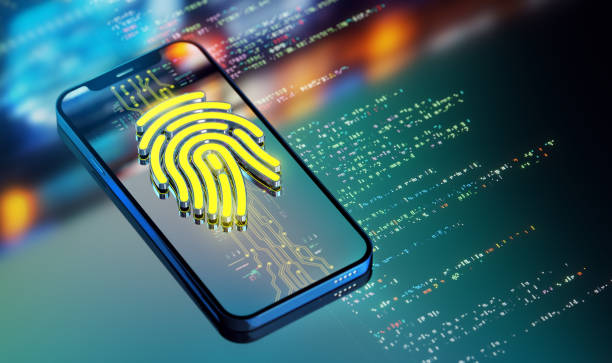The most common microwave breakdowns and how to fix them
Microwave ovens have become an integral part of modern life, providing fast and convenient cooking. They are widely used both at home and in offices and other institutions. However, just like any other electrical appliance, microwaves can malfunction over time or as a result of improper use.
In this article, we’ll take a look at the most common microwave breakdowns that users face and provide practical tips on how to fix them. Knowing the main problems and how to solve them will help keep your microwave in good working order and extend its service life. So, let’s take a look at the main types of microwave breakdowns and the steps to fix them.
The most common microwave breakdowns
1. The microwave does not work
- Possible causes: The fuse could have failed due to a power surge or overload. Also, power problems, such as a faulty outlet or cable, can cause a lack of power. A broken inverter can prevent the microwave from working.
- Troubleshooting steps: Check the microwave fuse and replace it if it is blown. Make sure the power outlet and cable are in good working order. If the problem is with the inverter, contact a professional for diagnosis and repair.
2. Incorrect heating or no heating
- Possible causes: A broken magnetron – the main component of the microwave responsible for generating microwaves – can cause a lack of heating. Alternatively, problems with the diode or capacitor can affect the heating power.
- Troubleshooting steps: Check the magnetron, diode and capacitor. If they are damaged, replace them with new ones. This task may require special tools and knowledge, so contact a professional to perform this work.
3. Noise during operation
- Possible causes: Noise can be caused by worn fan or magnetron bearings, as well as problems with the fan itself.
- Troubleshooting steps: Check the bearings and the fan. If the bearings are worn, replace them. Also, check the magnetron for damage and replace it if necessary.
4. The control panel does not work
- Possible causes: A damaged or worn sensor on the control panel can cause a malfunction. Also, loose connections between the control panel and other components of the microwave may cause the problem.
- Troubleshooting steps: Check the control panel sensor and connections. If the sensor or other components are damaged, replace them.
5. Door does not close or latch
- Possible causes: The door may not close due to a damaged lock or worn hinges.
- Remedy steps: Check the lock and hinges for damage or wear. Replace these parts as necessary to ensure proper door operation.
6. Sparks during operation
- Possible causes: Sparks can occur due to metal objects inside the microwave or damage to the mica. Also, a short circuit in the electrical circuits can cause sparks.
- Troubleshooting steps: Check for metal objects inside the microwave and remove them immediately. Check the condition of the mica and replace it if it is damaged. Also inspect the other components for damage and replace them as necessary.
When to call in the professionals
While many microwave problems can be fixed by yourself, there are situations when calling in the professionals becomes necessary for safe and effective repairs. Here are a few cases when it is better to call in the experts:
- Electrical problems: If you suspect that the problem is related to the electrical part of the microwave (such as a magnetron, diode, capacitor, or inverter), it is best to contact a qualified electrician. Working with high-voltage components can be dangerous for untrained users.
- Unidentified or complex breakdowns: If you are not sure what exactly the problem is or if the breakdown is more complicated than expected, a specialist will be able to accurately diagnose and repair the breakdown.
- Violation of technical characteristics: If, after repairing or tampering with the microwave, the microwave starts to operate out of specification (e.g., no or low heating, noise, sparking), contact a specialist to check and adjust the appliance.
- Lack of necessary tools and microwave parts: Some breakdowns may require special tools or parts that you may not have. In this case, it is best to contact professionals who have the appropriate equipment and access to the necessary parts.
- Warranty repairs: If your microwave is still under warranty, attempting to repair it yourself may void the warranty. Contact a certified service center for repairs to maintain the manufacturer’s warranty.
- Safety: Any breakdowns that involve malfunctioning of safety mechanisms (e.g., protection against opening the door during operation) should be left to professionals to ensure safe operation of the microwave.
Contacting a professional for complex or dangerous breakdowns will help maintain safety, prevent further damage to the appliance, and ensure that it works properly.
Conclusion
Microwave ovens are an important and indispensable household appliance that provides convenience and speed of cooking. However, as with any other electrical appliance, users sometimes have to deal with various breakdowns. Understanding the most common problems and how to solve them can help you keep your microwave in good working order and extend its lifespan.
Regular maintenance and careful attention to the operation of your microwave will help you avoid many common breakdowns. In the event of a problem, be sure to check the main components and fuses, but remember that complex or dangerous breakdowns are best left to professionals.
With timely and qualified repairs, you can maintain the efficiency and safety of your microwave. Contacting a specialist if necessary will help you avoid further problems and ensure the reliability of your appliance.







